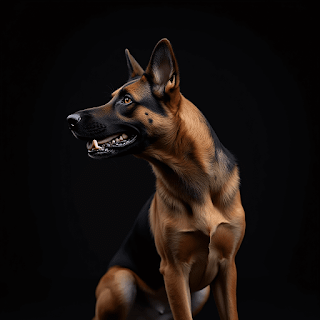The 10 Most Dangerous Dog Breeds
The 10 Most Dangerous Dog Breeds
Dogs have been our companions for thousands of years, evolving from wild wolves into the diverse breeds we know today. Despite centuries of domestication, it's crucial to remember that dogs remain animals with natural instincts. While most are loving pets, some breeds can pose significant risks due to their size, strength, or temperament—especially when poorly trained or neglected.
Each year, approximately 4 million people suffer dog bites, making it essential to understand which breeds might present higher risks. This list evaluates the 10 most dangerous dog breeds based on documented attacks and fatalities, comparing current data with 2021 statistics.
It's worth noting that a dog's behavior stems from both nature and nurture. Many aggressive incidents correlate directly with negligent ownership rather than inherent breed characteristics. If you've been attacked by a dog due to an owner's negligence, consulting with a specialized dog bite attorney is advisable.
The 10 Most Dangerous Dog Breeds in 2025
1. Pit Bulls
Representing the largest breed category on this list, Pit Bulls account for approximately two-thirds of fatal dog attacks. During the study period, these powerful dogs were responsible for 284 deaths, wielding a bite force of 235 PSI.
"Pit Bull" actually serves as an umbrella term covering several breeds, including American Pit Bull Terriers and Staffordshire Terriers. Historically bred for hunting and fighting, these muscular dogs possess distinctive physical traits that make their bites particularly damaging.
2. Rottweilers
With 45 fatal attacks during the study period, Rottweilers rank second. These dogs typically protect family members fiercely but may view visitors as threats. Their powerful build and sometimes unpredictable temperament, combined with a bite force of 328 PSI, previously earned them the reputation as the most dangerous breed before Pit Bulls claimed that dubious distinction.
3. German Shepherds
German Shepherds have been implicated in 20 deaths according to the study. Known for their territorial and sometimes aggressive nature, these dogs possess a bite force ranging from 238-291 PSI. Their history as working dogs for police and military units speaks to their capabilities as effective weapons when not properly trained. Despite their potential dangers, these intelligent dogs respond exceptionally well to proper training.
4. American Bulldogs
Distinguished by their powerful musculature, American Bulldogs were responsible for 15 deaths, representing 3.5% of fatal attacks in the study. With a bite force of 305 PSI, they differ significantly from their British Bulldog cousins in terms of power and potential danger.
5. Bullmastiffs
Accounting for 3.2% of fatal attacks in the study with 10 deaths, these giants can weigh up to 130 pounds. Their immense bite force of 552 PSI enables them to inflict serious damage. Originally bred as guardians, their protective instincts can turn dangerous without proper socialization.
6. Siberian Huskies
Responsible for 3% of fatal attacks, Siberian Huskies have attacked both adults and children. Their strong survival instincts and 320 PSI bite force make them potentially dangerous. Historically used in cold regions for transportation, their independent nature and prey drive can create problematic situations when these survival instincts activate.
7. Labrador Retrievers
Perhaps surprisingly, America's favorite breed appears on this list, accounting for 2.1% of attacks in the study. Large, powerful, and athletic, Labs can deliver a 230 PSI bite when they feel threatened. Though generally friendly, their hunting dog background means they possess the physical capability to cause harm when defending themselves or correcting perceived behavioral issues.
8. Boxers
With 7 fatal attacks documented in the study and numerous non-fatal bites, Boxers combine muscular builds with high energy and protective instincts. Their 230 PSI bite force becomes dangerous when they perceive threats. Proper early handling and training are crucial with this working breed.
9. Doberman Pinschers
Bred specifically for protection, Dobermans function as highly effective guard dogs. They were responsible for 6 deaths during the study period and possess an impressive 600 PSI bite force. Their sleek appearance and historical role as guardian dogs make them potentially dangerous without proper training.
10. Alaskan Malamutes
Large, powerful, and energetic, Malamutes sometimes disregard owner commands. They caused 4 deaths during the study period, delivering bites with 400 PSI force. Resembling Siberian Huskies but larger, their high energy and tendency toward disobedience make early training essential.
Prohibited in multiple countries and parts of the United States, the Japanese Tosa delivers a 556 PSI bite force. Developed through crossbreeding in Japan specifically for fighting in a sumo-like style, this breed requires extensive training and socialization to be managed safely.
Dog Bite Statistics
The probability of dying from a dog bite is relatively small, yet dogs rank as the fourth deadliest animal. Of the 4 million annual dog bite victims, a significant number require medical treatment. Children between 0-2 years old represent a concerning percentage of fatalities. On average, emergency rooms treat multiple dog bite victims daily, with several deaths occurring annually across the United States.
Final Thoughts
While this list identifies potentially dangerous breeds, proper training and socialization remain the most critical factors in dog behavior. Remember that all dogs retain certain instincts, and several additional factors influence bite risk:
- Male dogs bite more frequently than females
- Unneutered dogs display more territorial and aggressive behaviors
- "Fence aggression" can develop in otherwise gentle dogs
- Never approach unfamiliar dogs without the owner's permission
The environment and experiences significantly shape a dog's behavior. If choosing one of these breeds, take appropriate precautions, including early training. Being on this list doesn't make a dog inherently too dangerous to own, but it does warrant extra care. Each dog is unique, and a loving, structured environment promotes peaceful companionship.
Remember, if you've experienced a dog attack, professional legal assistance is available to help you understand your options.

















